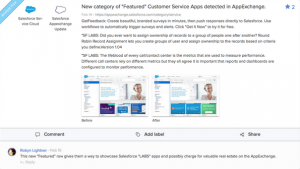Do you know what the most successful YouTube channels have in common? None of them got a million subscribers overnight.
They’ve worked hard to be where they are now. And I’m not just talking about improving their content. That does play a big role in a channel’s success, but it’s not all there is to it. It also needs visibility.
Yes. If your video doesn’t appear in the first three results pages, then it doesn’t matter if it’s the best tutorial out there or the promotional video equivalent of The Godfather. For people to enjoy your content they have to find it first – and that’s when keyword optimization comes into play.
The right use of keywords will help your content’s visibility. The higher it’s ranked on YouTube SERPs, the more chances of people clicking on! But that can be easier said than done.
So, today, we are on about today is where to find your ideal keywords and how to use them to maximum effect. Let’s go!

The Type of Keywords You Should Use
Try to put yourself in your prospective customer shoes. If you were them, what would you type in the YouTube search bar?
Probably the first thing that comes to your mind are generic words related to your niche or product. Well, you can start by using a keyword planner tool to check how popular those words are. In our case, an animated video company, a generic search would be “explainer videos.”
The problem with generic or broad words is that they throw tons of results. That means way too many videos may appear along with yours –and in many cases, above it.
On the other hand, long-tail keywords, such as “what is an explainer video” or “animated explainer videos,” have fewer results. So, if you used that sort of keywords, your content would have scope, but less competition in SERPs.
Since long-tail keywords are more specific than generic ones, fewer people might search for them. However, the viewers that do are that much more likely to be aiming for what you are offering. So, if you are after a solid, sustainable keyword strategy, start by focusing on longtail keywords!
Where to Find Keywords
Now that you’ve learned the type of keyword you want, let’s explore where you can go find them!
YouTube Search Suggestions
Remember what I said about long-tail keywords being more effective than short ones? Well, it’s not all sunshine and roses with longtails either.
Some of them are more effective than others, and finding the best long-tail keywords for your video can be complicated. After all, it can be difficult to figure out which exact phrases people type the most into the YT’s search bar!
Of course, you can always brainstorm potential long keywords and then check how popular they are. But a much more straightforward method is to type the primary, generic keywords on YT’s search bar and go over the suggested searches that pop up before pressing Enter.
Those suggestions are based on common searches, so you can be sure there’s a demand for them on the platform.
Popular Related Videos
Taking a page from successful videos related to your field can be very helpful as you look for the keywords you’ll want to focus on.
Take a look at those videos’ titles, descriptions, and tags, and check which keywords they are after. That can give you a clear idea of the keyword strategy that’s working for popular videos/channels, which may work for your content as well!
Having said that, do not stick exclusively to this method! Only use it to inform/nurture your own research. While competitor research is a common advanced strategy for many SEO and animated video production companies out there, having it as your primary source can impact your performance negatively. As your pieces will always compete with – and run after – those other videos, which already rank high in the SERP.
Google Trends
Once you have pre-selected some keywords, you’ll also need to figure out how popular they are compared to each other, so that you can focus on the ones more likely to pay off. Google Trends can be an extremely helpful – and free – tool you can use for that task.
Google Tends can help you find precise information on what words people type into the YT’s search bar the most. With it, you can compare different keywords at the same time, with visual data comparing their search volumes and popularity. Use it to refine your keyword pool and filter out keywords that don’t appear in many searches, so that you can focus on the ones that do.
Just a little reminder before you start using the tool: make sure you change the analytic factor “Web Search” to “YouTube Search.” Otherwise, you’ll end up with Google’s search data – Which can be quite different from YouTube’s.

How to Apply Your Keywords
At this point, you should have an awesome list of keywords. Great! But having great keywords isn’t enough. You also need to know how to use them.
Optimizing Titles
There are two ways in which your video’s title can contribute to enhancing your SEO on YouTube.
The first one is to always the best keyword you’ve researched in the title. In this way, YouTube can not only identify your video’s content more accurately but also index it accordingly.
The second tactic is making your title appealing to humans as well. Optimizing for algorithms is all is great, but not at the expense of human appeal. Do it right, and people will feel more drawn to click on your video. And a higher click-through rate leads to better SEO.
So basically, your title should be an interesting sentence or question that includes your main keywords.
Lastly, try and make sure your titles are also honest! Nobody likes to be misled by a video’s title! If your potential viewers click on it expecting one thing and end up finding another, they may get annoyed. Even if the content is good, they might dislike your video and leave negative comments preventing others from watching it.
Needless to say, that would defeat the purpose of optimizing through keywords.
Optimizing Video Descriptions
Even in this day and age, when it’s so easy to learn about content marketing strategies, one can still find YouTube videos with an empty description box. It’s a shame since their channels are wasting an excellent opportunity to include valuable keywords.
Take advantage of the description box and outline your video’s content using the keywords you researched!
It’s not like you have to write much either. Around 200 words should do the trick, and that’s usually enough length to tackle all the keywords relevant to the video.
Longer descriptions may not draw the viewers’ attention. So if you wish to provide more information, you can add related links to your webpage or to your social media presence.
In any case, try not to give away too much about the video’s content on your descriptions. You know, don’t go into much detail about it and avoid providing details about the content. The description box should work as a complement to the video, not as a replacement!
Leveraging Transcripts & Captions
YouTube’s search bots can’t detect the keywords mentioned in a video because they can only read text –bummer. Still, you can let the platform know every single word said in your video by leveraging tools like transcriptions and captions.
They both show your video’s dialogues and narration as text. The difference between them is that captions pair that information with time data, so the words are displayed on the screen while they are being said.
YouTube’s crawlers can go through both transcripts and captions and index the written words –a.k.a. The video’s spoken content– accordingly. This provides YouTube much more detailed information on what the video is about, expanding and deepening your number of keywords.
Keep in mind most times is better to upload the transcription yourself instead of using the YT’s automated one. That one can misunderstand the spoken words, especially if the person on the video has a thick accent or a particular way of speaking. As a result, the crawlers may index the keywords wrongly.

Summing Up
You can invest a lot of resources and time to make your YouTube channel grow. Still, your videos won’t stand a chance if people can’t find them easily.
For your strategy to succeed, you need to be aware of what your potential viewers are writing in the YouTube search bar. It’s amazing what something as simple as including those words in the title, the description, and the dialogues can do for your video’s visibility.
So, crack your knuckles and start finding out which are your potential keywords!
Digital & Social Articles on Business 2 Community
(14)









